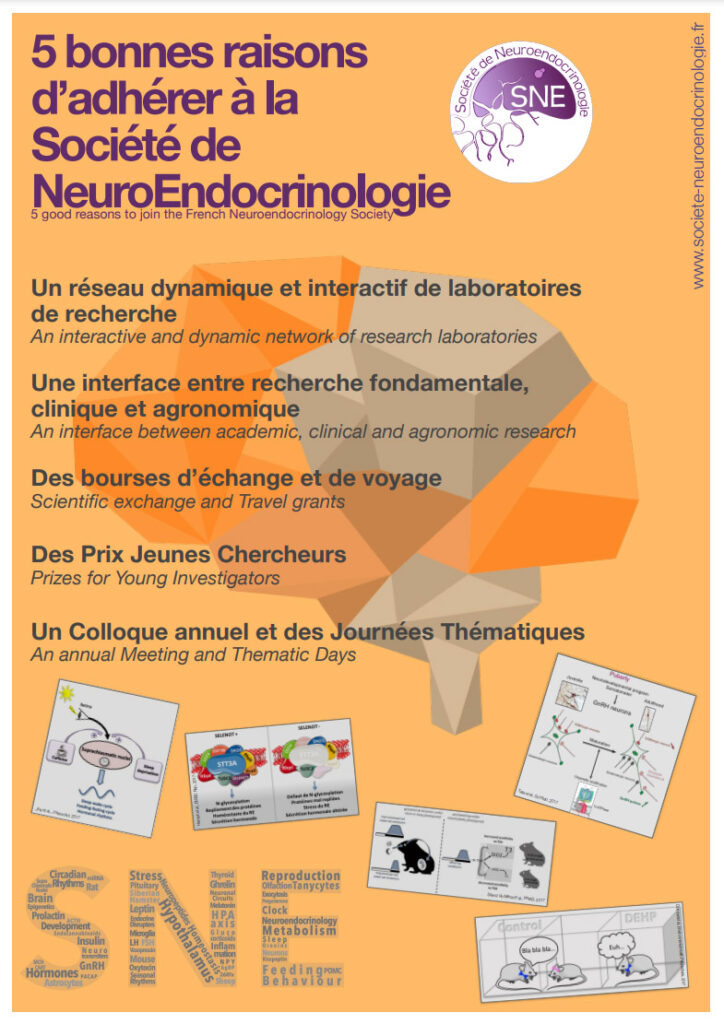The effect of RFRP-3 on the gonadotrophic axis of the Syrian hamster: sex-dependent differences and modes of action
Résumé
Le peptide RFRP-3 joue un rôle dans la régulation de l’axe hypothalamo-hypophyso-gonadotrope des mammifères. Le but de cette étude était de déterminer l’implication du RFRP-3 dans la régulation de l’axe reproducteur du hamster Syrien. Nos résultats montrent que le RFRP-3 stimule l’axe gonadotrope chez le hamster Syrien mâle, tandis qu’il a des effets variables chez la femelle. En effet, chez la femelle le peptide inhibe l’axe reproducteur lorsqu’il est administré au moment du pic pré-ovulatoire de LH le jour du proestrus, et n’a pas d’effet pendant le diestrus. Nous avons poursuivi notre étude par la caractérisation des sites d’action du RFRP-3 chez le hamster Syrien, en démontrant que l’effet du peptide sur l’axe gonadotrope est médié directement ou indirectement par les neurones à GnRH. De plus, nous avons écarté l’hypothèse d’un effet hypophysiotrope du peptide chez cette espèce. Pour conclure, les résultats présentés soulèvent de nombreuses questions quant aux effets espèce- et genre-dépendants du RFRP-3 sur l’axe gonadotrope du mammifère.
Mots-clés : RFamide-related peptide, reproduction, hamster Syrien, axe gonadotrope, saisonnalité.
——————–
Summary
RFRP-3 has been shown to play a role in the regulation of the mammalian hypothalamic-pituitary-gonadal axis. The aim of this work was to determine the involvement of RFRP-3 in the regulation of the Syrian hamster reproductive axis. We report unprecedented results indicating that RFRP-3 stimulates the male Syrian hamster gonadotrophic axis, whereas it has variable effects in female Syrian hamsters. Indeed, in females the peptide inhibits the reproductive axis at the time of the LH surge on the day of proestrus, and has no effect during diestrus. We went on to characterize RFRP-3 sites of action in the Syrian hamster brain, and show that the effect of the peptide on the gonadotrophic axis is mediated directly or indirectly via GnRH neurons. Moreover, we clearly rule out the possibility of a hypophysiotrophic effect of RFRP-3 in this species. Taken together, the present data raise interesting questions regarding species- and sex-dependent effects of RFRP-3 on the mammalian gonadotrophic axis.
Key words: RFamide-related peptide, reproduction, Syrian hamster, gonadotrophic axis, seasonality.
Présentée le 15 mai 2013
Laboratoire où a été préparée la thèse :
– Institut des Neurosciences Cellulaires et Intégratives, CNRS UPR 3212
Nom du directeur de thèse :Valérie Simoneaux(Strasbourg)et Jens D Mikkelsen(Copenhagen)

